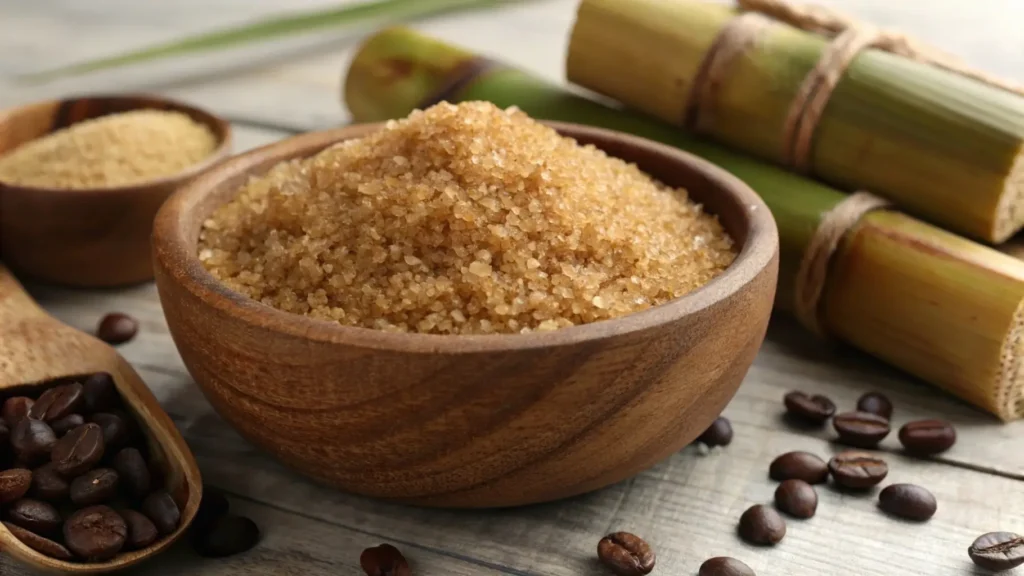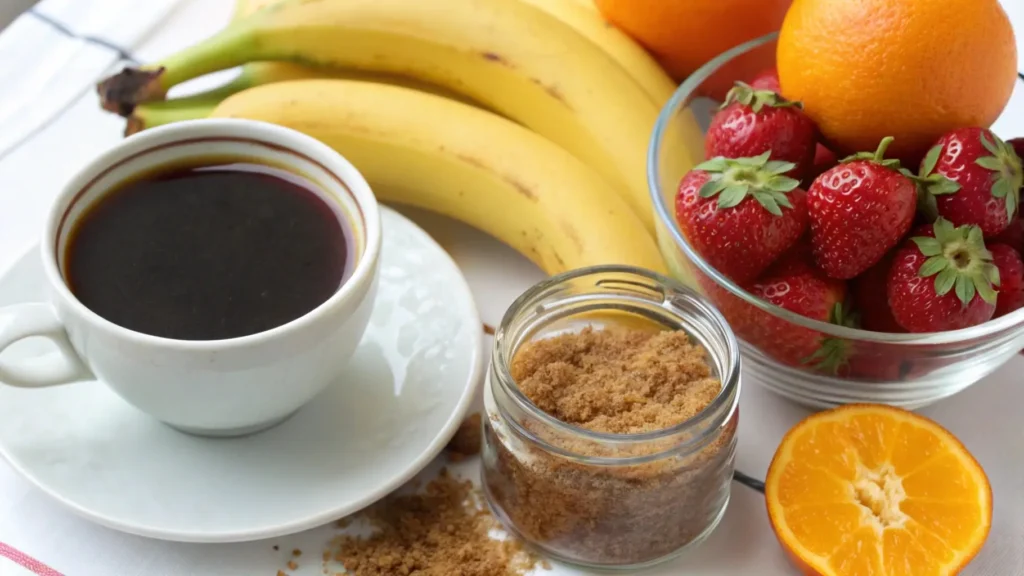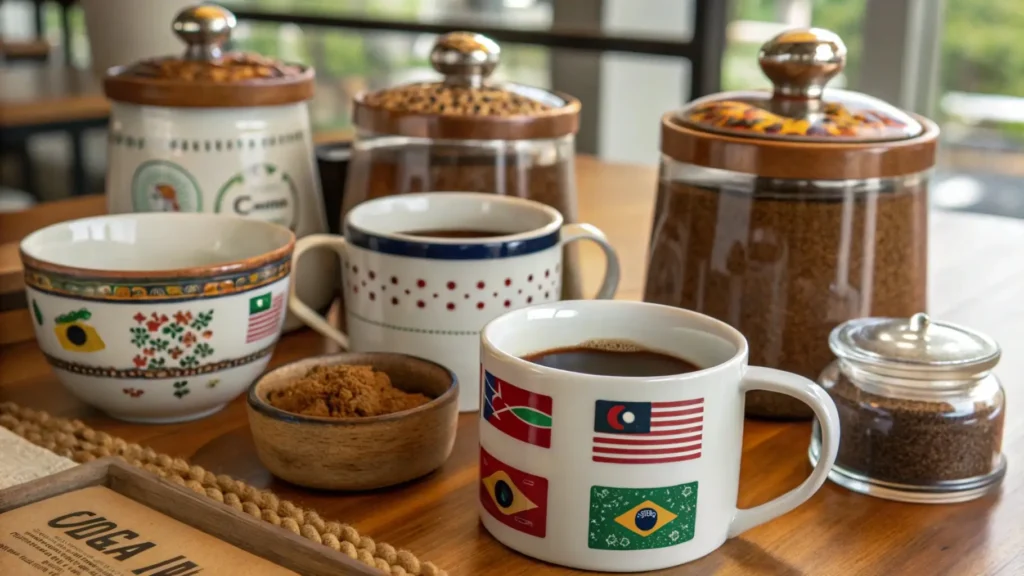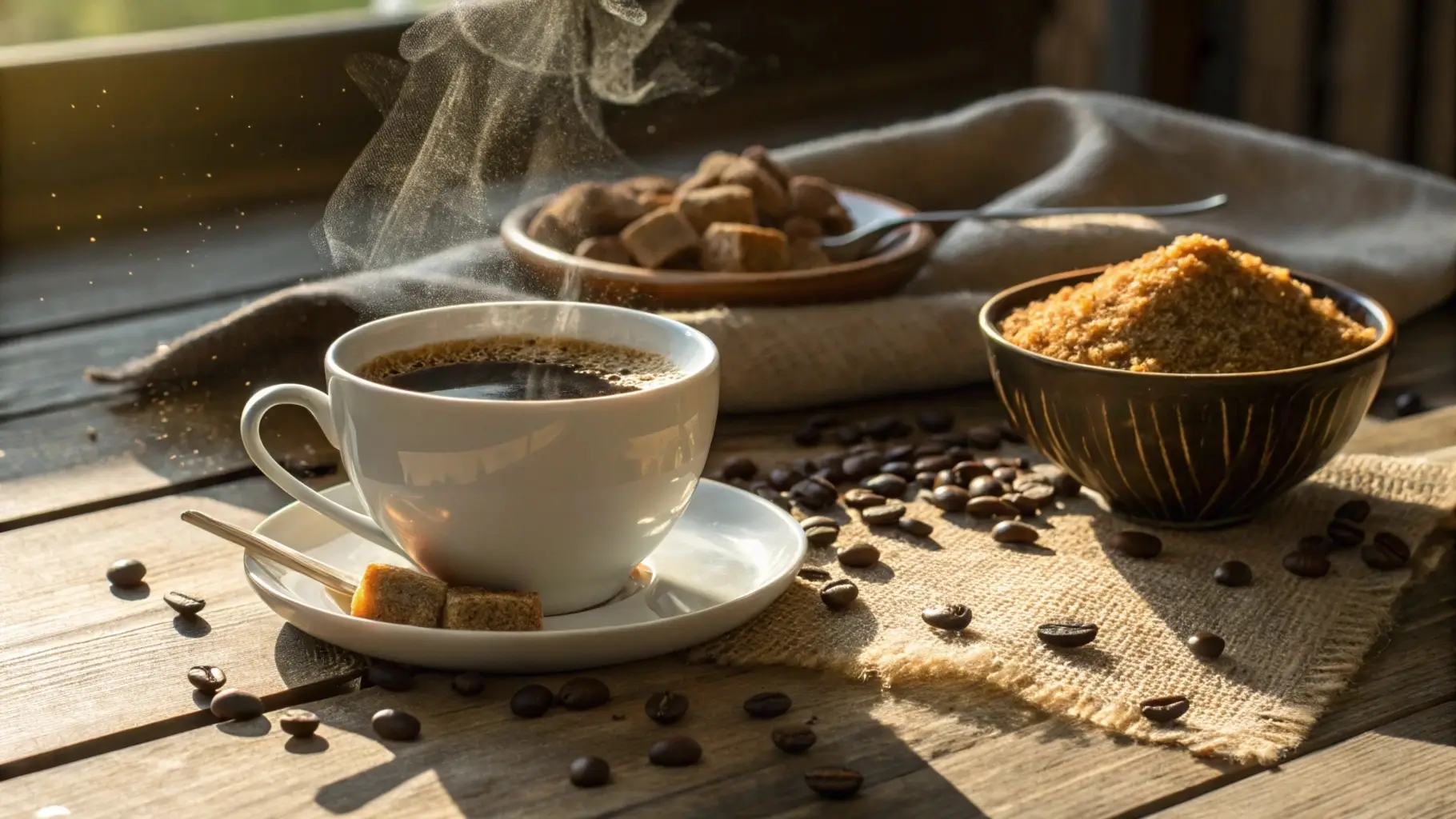Coffee lovers are always exploring ways to elevate their favorite beverage, and one trending addition is brown sugar. This natural sweetener, packed with molasses and a rich flavor, brings a unique twist to coffee. From its origins and health benefits to brewing tips and cultural significance, this article dives deep into all things brown sugar in coffee. If you’re curious about why this sweetener stands out, you’ve come to the right place.
Table of contents
What is Brown Sugar?
Introduction to Brown Sugar
Brown sugar is a type of sugar that stands apart from its white counterpart due to its molasses content. This molasses gives it a distinct flavor, a slightly moist texture, and a warm, caramel-like color. Unlike white sugar, which is refined to remove impurities, brown sugar retains some of the natural richness of sugarcane or sugar beet.
What makes brown sugar in coffee special? Its earthy notes complement the boldness of coffee, creating a harmonious balance between sweetness and depth.
How Brown Sugar is Made
The process of making brown sugar involves combining refined white sugar with molasses or partially refining sugar to retain its molasses content. Light brown sugar contains less molasses, offering a milder flavor, while dark brown sugar has a deeper, more robust taste due to higher molasses levels.
Types of Brown Sugar: Light vs. Dark
Understanding the differences between light and dark brown sugar can help you choose the best option for your coffee. Light brown sugar brings a subtle sweetness, ideal for mild roasts, while dark brown sugar adds a richer, almost smoky flavor that pairs beautifully with strong, dark coffee blends. Both types are versatile and worth experimenting with in your brew.

Why Use Brown Sugar in Coffee?
Unique Taste Profile Compared to White Sugar
When you swap white sugar for brown sugar in coffee, the difference in taste is instantly noticeable. While white sugar is purely sweet, brown sugar adds a caramelized, earthy depth to your brew. Its molasses content enhances the natural flavors of coffee, especially in medium and dark roasts, giving your cup a richer, more layered profile.
For those who enjoy experimenting, brown sugar creates a balanced sweetness without overpowering the boldness of coffee. The result? A drink that feels indulgent but not cloying.
Nutritional Differences and Benefits
Brown sugar isn’t just about flavor—it’s a slightly more natural option than white sugar. Thanks to its molasses, it contains trace amounts of minerals like calcium, potassium, and iron. Though these levels are small and don’t make it a health food, they’re a bonus compared to white sugar’s complete lack of nutrients.
Moreover, the unrefined nature of brown sugar in coffee can make it a preferable option for those seeking a less processed sweetener.
Enhancing Coffee Flavors with Molasses
The molasses in brown sugar brings out the nutty, chocolatey, or even fruity notes in coffee. This synergy can transform a basic cup into a gourmet experience. Whether you’re enjoying a cold brew or a piping hot latte, adding brown sugar can elevate your coffee-drinking ritual to new heights.
Health Benefits
Antioxidant Properties of Molasses
Surprisingly, molasses—the key ingredient in brown sugar—is packed with antioxidants. These compounds help combat oxidative stress in the body, reducing inflammation and supporting overall health. When you choose brown sugar in coffee, you’re adding a subtle boost to your morning routine.
While it’s no substitute for eating fruits and vegetables, brown sugar offers a healthier edge over its refined counterpart.
Brown Sugar vs. Artificial Sweeteners: Health Impact
In the quest for sweetness, artificial sweeteners might seem like a better choice. However, many people prefer brown sugar for its natural origins and lack of synthetic chemicals. Unlike artificial sweeteners, which can sometimes leave a metallic aftertaste, brown sugar blends seamlessly into coffee, enhancing its natural flavor.
Additionally, artificial sweeteners may lead to cravings for more sugary foods. In contrast, brown sugar in coffee satisfies the desire for sweetness while adding depth and character to your drink.
Moderation: How Much is Healthy?
Of course, like any sugar, moderation is key. Too much brown sugar can lead to the same health issues as white sugar, including increased calorie intake and potential blood sugar spikes. To enjoy the benefits without overindulging, aim for a teaspoon or two per cup—a small amount goes a long way in enhancing your coffee.

How to Add Brown Sugar to Your Coffee
Best Practices for Mixing Brown Sugar
Adding brown sugar to coffee is an easy and effective way to boost its flavor. For the best results, dissolve the sugar in a small amount of hot coffee first. This helps the molasses mix evenly, avoiding any gritty texture or uneven sweetness.
For a fun twist, try adjusting the sugar-to-coffee ratio. One teaspoon adds a light sweetness, while two teaspoons create deeper caramel tones, especially in strong, dark roasts. Stir well and pair it with milk or cream for an even richer taste.
Creating a Brown Sugar Coffee Recipe
If you’re feeling adventurous, you can whip up your own brown sugar coffee. Brew a strong cup of espresso or French press coffee. Add a teaspoon of dark brown sugar and a pinch of cinnamon for a warm, spiced kick. Top it off with steamed milk or cream for a latte-like indulgence.
For a cold brew version, dissolve the sugar in a bit of warm water before mixing it with chilled coffee. This simple step creates a syrup-like consistency, ensuring an even blend.
Tips for Brewing Techniques with Brown Sugar
Not all brewing methods handle brown sugar in coffee the same way. In pour-over or drip coffee, add the sugar directly to your cup. With espresso, mix it into the shot before diluting with water or milk. For French press lovers, stir the sugar into the hot water along with the coffee grounds before steeping.
For more delicious recipes and creative ideas, check out Kamala Recipes’ collection of delightful desserts and beverages.
Does Brown Sugar Change Coffee’s Taste?
Sweetness and Depth of Flavor
When it comes to taste, adding brown sugar in coffee goes beyond simple sweetness. The molasses in brown sugar introduces a deeper, almost toffee-like flavor that pairs beautifully with coffee’s natural bitterness. This complexity transforms your morning cup into a more nuanced, indulgent experience.
White sugar sweetens but lacks the layered richness of brown sugar. The result is a drink that feels more rounded, with hints of caramel or even subtle spiciness, depending on the roast.
Pairing with Different Coffee Beans
The type of coffee bean you use can significantly impact how brown sugar in coffee tastes. For instance, medium roast beans with nutty or chocolatey notes harmonize beautifully with brown sugar’s caramelized flavor. On the other hand, light roasts with fruity undertones create a sweet, almost dessert-like combination.
Dark roasts benefit from the rich molasses profile, resulting in a bold yet smooth cup. If you’re unsure, try experimenting with various bean types and brewing methods to find your perfect match.
Cultural and Historical Perspectives
Brown Sugar’s Global Use in Coffee
Across the globe, brown sugar in coffee has become a staple for creating warm, comforting brews. In Latin America, panela—a type of unrefined brown sugar—is often mixed into coffee to enhance its bold flavors. Similarly, in Southeast Asia, is a key ingredient in iced coffee recipes, providing sweetness with a hint of smokiness.
In Western countries, many coffee lovers are choosing brown sugar as a tasty alternative to white sugar. Its flexibility and ability to enhance different coffee styles have made it a favorite around the world.
Origins and Popularity Over Time
The use of brown sugar in coffee dates back centuries, rooted in the practice of sweetening beverages with minimally processed sugars. Historically, brown sugar was more accessible in certain regions due to its simple production process, making it a natural choice for coffee drinkers. Over time, its unique flavor and natural appeal have solidified its place in coffee culture.

Frequently Asked Questions Based on Google’s ‘People Also Ask’
Is Good with Coffee?
Absolutely! Adding brown sugar to coffee is a game-changer for coffee lovers. Its sweet, caramel flavor balances the coffee’s slight bitterness, making each sip smooth and indulgent. The molasses in brown sugar adds rich layers to your cup, making it a great choice for anyone who wants more than just basic sweetness. Whether you enjoy a bold dark roast or a smooth medium roast, brown sugar enhances the taste and makes it even more satisfying.
How Much Brown Sugar Do You Put in Coffee?
The amount of brown sugar in coffee depends on your personal preference. Start with 1 to 2 teaspoons per cup as a baseline. If you prefer a lighter sweetness, stick to 1 teaspoon, but if you enjoy a sweeter brew, increase to 2 teaspoons or more. Experiment with different quantities to find the perfect balance for your taste buds. Remember, moderation is key to keeping your coffee both flavorful and healthy.
What Does Brown Sugar Do to Your Body?
Brown sugar provides a quick energy boost thanks to its carbohydrate content. The molasses in brown sugar contains trace minerals like calcium, potassium, and iron, but the amounts are small and don’t significantly impact your diet. Consuming brown sugar in coffee in moderation is fine, but overindulgence can lead to increased calorie intake, potential blood sugar spikes, and dental issues, just like any other sugar.
Is It Better to Use Raw or Brown Sugar in Coffee?
Both in coffee have their merits. Brown sugar offers a richer, more complex flavor due to its molasses content, making it ideal for those seeking a deeper, caramel-like sweetness. Raw sugar, on the other hand, is less processed than white sugar and provides a milder, more neutral sweetness. The choice ultimately depends on your flavor preferences and the type of coffee you’re brewing.

